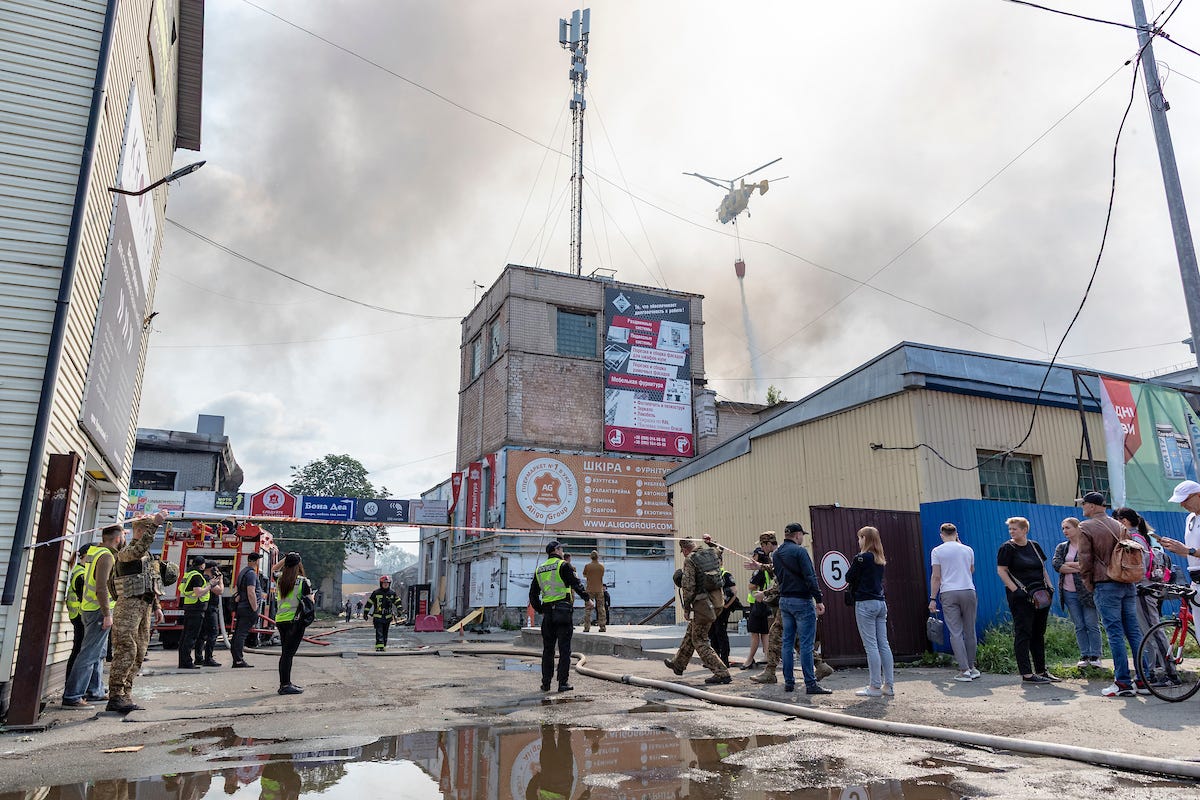Where the Sewing Machines Burned
No uniforms here. Just melted thread, scorched machines, and women who whispered hope into rubble. “We’ll sew again,” one said. “Because we’re not done.”
The air was thick with mourning as I stepped into the rubble of what had once been a workplace.
You could smell what had been lost: burnt fabric, singed wires, the ash that clings to fingernails, to lungs, to memory. This was not a battlefield. It was a tailor's shop. An ordinary place where hands once crafted aprons and hemmed trousers. Where laughter probably lived in the hum of sewing machines and the rustle of cotton bolts. And now, rubble.

There was nothing left to clean. But she still tried. That, I realised, is how Ukraine survives, not through victory, but through the compulsion to tidy the apocalypse and begin again.
The morning after the long night of June 5–6 did not open with birdsong but with the grim cadence of rubble being shifted and pl…



